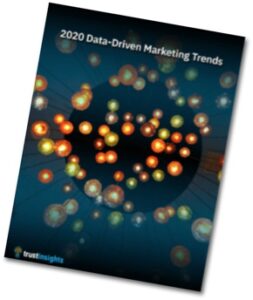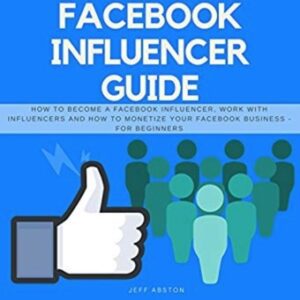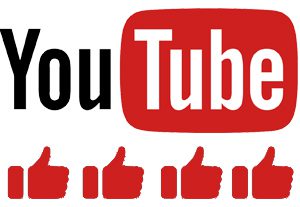Data-Driven Marketing: 2020 Trends for Facebook, YouTube and PR
I recently asked a friend who is a marketing manager in a mid-sized publicly traded tech company how things were going in the new year. “Things are insane,” was her short reply. I wondered afterward if this short quip referred to a positive or negative perspective on the start of the year and how things were going.
The month of January is a natural point in time to take a look at what we’re doing in terms of strategic marketing and PR. All with a perspective on what to keep doing and what to stop doing, Hopefully, leading to strategic decisions based on metrics and ROI. And this ROI measurement is also a particularly important part of understanding why SEO is important in your strategic planning.
With reference back to my friend’s short reply about things being insane, I couldn’t help but reflect on the definition of Insanity: Repeating the same behavior and expecting different results.
Data-Driven Marketing Decisions

With this thought in mind, and influenced by a recent Trust Insights PDF titled 2020 Data-Driven Marketing Trends, I want to summarize and reflect on a few of the key trends and points identified in the PDF and how these insights can help steer strategic thinking as we turn the corner into 2020 and beyond.
Trust Insights is a highly regarded data-driven marketing and PR thought leadership group, one well respected for its application of data in determining optimal strategies, such as using a S.W.O.T. Analysis (Strengths, Weaknesses, Opportunities, Threats) for steering successful marketing programs.
The 2020 Data-Driven Marketing Trends report looks at 12 different sets of topics related to key marketing activities that most of us work with on a daily basis. I won’t cover all of the 12 points in this blog post, but if you’re interested in other trends not covered here (including Instagram and Email Marketing trends), you can download a PDF of the entire report at this link.
Trend #1: Is Facebook Worth the Effort?
Trust Insights examined 2,316 Facebook brand pages that published a total of 6,034,384 Facebook posts. It’s important to note that these were not paid or boosted posts. The goal of the research was to get a sense of how organic (non-paid) brand page posts perform with regards to the key ROI Engagement qualifier.

Engagement — as referenced by almost every reputable social media expert out there — is the top metric you want to look at with regards to the value of social media and your marketing ROI.
Trust Insights defines engagement as “…the number of interactions (reactions, comments, shares) that occurred on a Facebook brand post, divided by the number of followers of that Facebook brand page at the time of posting.”
Engagement is the Holy Grail of results measurement because if people don’t care enough to interact with your content (share, like, comment, etc), then essentially, you are the proverbial tree falling in the forest with no one around. You’re not making a sound.

The result of the research? The median amount of engagement an unpaid/organic Facebook brand post received in 2019 was 0.0215%. Barely 2%. That means 1 out of 4,647 people who follow a brand page referenced in the study engaged with unpaid (organic) content found in the newsfeed.
Click this link to watch a short tutorial on how to use Facebook Insights to determine your Facebook Page Engagement Rate.
Even if you aren’t spending a lot of time focusing on Facebook in your marketing, this is a frightening statistic – one that should scare all of us who spend a significant amount of time looking for interesting things to post in the feeds of our Facebook brand pages. In essence, this tells us what many already suspect: a lot of time is being wasted in posting content on Facebook.
It also reminds me of the old advertising adage: “I know that half of the money I spend on advertising is wasted, I just don’t know which half.â€
The key takeaway from this research? Unpaid social media marketing — aka organic posts — on Facebook is effectively dead. As outlined in the Trust Insights PDF, “When 1 out of every 4,600 followers engage in any way with your content, you’re better off standing on the sidewalk in front of your office, handing out brochures, than you are investing time in posting on Facebook without paying.”
To put this in context, the report compares organic posts on Facebook to email marketing in terms of effectiveness. For contrast, according to Mailchimp , the average click rate for email in 2019 was 2.62%, 121 times greater than the results from the Facebook organic posting strategy.
A noteworthy conclusion the report underscores: “Facebook is only an ad platform. Period. End of sentence. Change your social media marketing accordingly. Do not build on Facebook, do not invest more than the bare minimum amount of time posting organically on Facebook, and engage in communities only where it makes sense to do so.”
Trend Report #2: Do Facebook “Influencers†Have Influence?
Next, the report looked at the power of Facebook influencers, defined as “…individuals who have prominent Facebook Page followings, using the Facebook Page (as opposed to a personal profile).”
The research team examined 621 Influencer pages for a published total of 2,219,519 Facebook posts that were not paid or boosted — pages that were posted organically by an Influencer.

What did the data show? Definitely not something these Influencers want to promote on their personal profile … The median amount of engagement a Facebook Influencer post, unpaid, received in 2019 was 0.0087%. As the report summarizes, “…To put it in context, that’s 1 out of every 11,500 people who follow an Influencer’s page engaging with its unpaid content.” Almost 3 times worse than the results in the Facebook organic/non-paid post strategy.
The report goes on to state: “1 out of every 11,500 fans [engaged] speaks to just how large any influencer’s audience has to be in order for anyone to see their content. This speaks to the plan of influencers over the past few years of acquiring as large an audience as possible for their key metric – audience size. Someone with millions of followers has an easier time asking for large fees than someone without millions of followers, but as the numbers show, that doesn’t translate into any meaningful engagement.”
Again, to compare this to the results generated by email marketing, according to MailChimp, the average click rate for email in 2019 was 2.62%, which is 301 times greater than the Facebook Influencer results.
Trend Report #3: Does YouTube Work for Marketing?

Trust Insights also examined the influence and viability of YouTube as a marketing and engagement platform. As with Facebook, the key metric here was engagement, which the researchers defined as “…the number of interactions (likes, dislikes, and comments) that occurred on a YouTube video, divided by the number of views of that video.”
For this part of the research, Trust Insights examined 20,250 YouTube channels with 514,402 videos posted that had at least 100 views. The key takeaway?
Per video engagement rate on YouTube is 3.7% – better performance than nonpaid organic posts on both Facebook and Instagram. This means that if you’re able to build a strong audience on YouTube, you can expect engagement and better ROI as a result.
There are several key takeaways to note with regards to this research on YouTube:
A 3.7% engagement rate is outstanding, especially considering that email marketing – also a very good ROI tactic – clocks in at a 2.62% engagement rate. This represents a 41% higher engagement rate for YouTube videos over email marketing.
Taking into consideration the high levels of engagement for YouTube videos compared with the relatively few numbers of videos that are produced, the YouTube sector presents an exciting opportunity for marketers to take advantage of with regards to improved engagement and ROI versus social media and even email marketing.
A key factor influencing this is the fact that despite a perception that “everyone’s creating video,” the reality is that most companies aren’t creating a lot a video, especially video with even a touch of production value.
This creates an opportunity for smaller players to out market larger players who can’t react to this dynamic fast enough.
These results point to the fact that the better the quality of the video production, the higher the chance that engagement rates will be positive. So, an innovative company with a small budget but the right tools and storylines will quickly gain a leg up on larger brands that get bogged down in production cycles and approvals.
Trend Report #4: Do Press Releases Still Matter?

In studying the role of press releases with regards to success in PR and marketing, Trust Insights found that those employing a press release only strategy – i.e. blasting out the occasional press release announcement in a random manner for a new product or service – has little to no impact.
A point of clarification: this does not mean that press releases can still not be effective in communicating key company messages and strategic announcements. And when written and formatted properly, help lead to increased sales.
It does mean that, unless these press releases are tied into an integrated messaging strategy, such as the content being repurposed or re-published via another brand channels such as a YouTube video, email newsletter, or paid social media campaign, there is little to no value in issuing press releases view the newswire or via an email blast.
Also, a key consideration should be the fact that the press release has morphed from being an editor-only content device (previously, press releases were only intended for editors to see when distributed via the newswire or one-to-one distribution) to that of an informational piece that can be distributed on the web and indexed just like a webpage.
For example, when crafted using SEO principles and good PR writing skills, a press release can actually be a powerful sales driver.
For this reason, press releases now are more SEO tools and strategies than they are pure press and editorial strategies. Editors still rely on them to keep up with a company’s new product announcements, but with the power of SEO, press releases can be much more than editorial plays.
The key takeaway: continue to use press releases as part of your overall messaging strategy, but integrate the content into other media platforms (social media, email marketing, YouTube, etc.) while tapping into the benefits that SEO and keyword strategies (using tools like SEMRush and BuzzSumo) bring to helping secure higher rankings for the content in Google search.
In summary, if insanity is the practice of repeating the same behavior and expecting different results, judging on past experience, many companies will continue to characterize their business environment as being “insane.” As you now know, this is not necessarily a good thing!
Based on the research in the Trust Insights data trends report, it’s a good bet you’ll stay sane in your marketing efforts and strategies if you employ the following strategies:
- Ramp up your Facebook paid marketing efforts with a regular focus on analyzing ROI and engagement.
- Dial back any use of Facebook “Influencers” who want you to pay them for organic posts based on their audience.
- Continue or increase your efforts in email marketing with the focus on measuring engagement rates in visits to your website.
- Put more emphasis on YouTube, with a focus on quality and storytelling to increase levels of viewership and engagement.
- Integrate your press release and PR efforts with other marketing tactics that can complement the strength of the news you focus on in your press release content.

Bill Threlkeld is president of Threlkeld Communications, Inc., a digital PR consultancy based in Santa Monica, California. Threlkeld Communications, Inc. specializes in Digital PR strategy and tactics, with a focus on integrated content campaigns. This approach to Digital PR is known as the Content Distribution Ecosystem, a unique content approach that synchronizes and integrates PR, Social Media, Blogs, Audio, Video, Email Marketing and other content.
